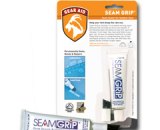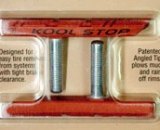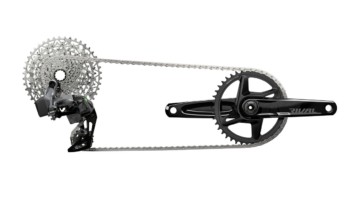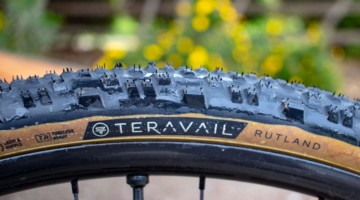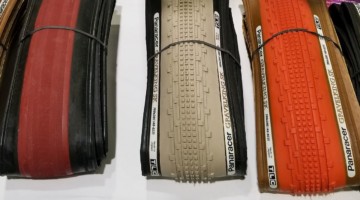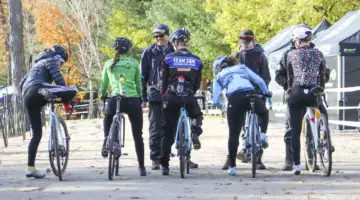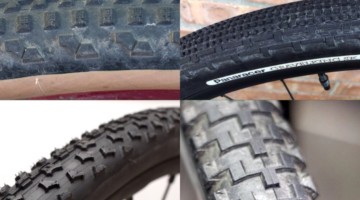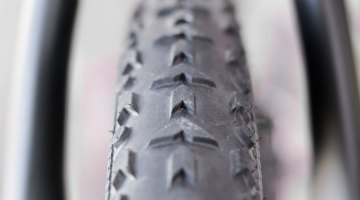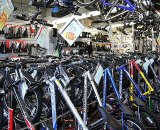
If you bought a bike off the rack, there are some small upgrades you can make that can make a big difference in your race. © Steven Depolo
It’s that time of year again: time to pull your cyclocross bike out of storage, take a good, long look at it and think, “Well, now what does it need?” Because we’re bike racers. And our bikes always need something, preferably something shiny and new. However, if you’re on a strict bike budget, there are some sneaky ways to upgrade or update your bike for the season. There’s an easy solution to a limited budget: accessories. (And yes, we realize that this piece reads like a fashion magazine article on making that Little Black Dress look brand-new by simply adding new jewelry or shoes.) Still, if you’ve been racing on — or just bought — a stock bike, we have some suggestions for how to dress it up so it stands out in the field (hopefully because you snagged the hole shot.)
We asked a few top mechanics to weigh in on their first picks for cheap upgrades, and we got a lot of great and varied responses.
Jason Gardner of Jinji Cycles
Saddle: stock saddles are usually of the “value version.” Having a saddle that fits you is indispensable in building an efficient ride. All the fancy parts and bits are worthless if you hate sitting on your bike. Spend some time and money to find the right one.
Cables: $100 can go a long way to upgrading your shifting with a new cable system. You can move up to semi sealed and fully sealed systems that shift more smoothly for a longer period of time and are less affected by the elements. Some good options include Gore Ride-On, Jagwire, Yokozuna, and Shimano’s XTR level semi sealed system.
Headset: for cyclocross racing, a quality headset is extremely important in my opinion. Again, most stock bikes come with a value oriented model; it’s a good place for a manufacturer to save cost. ’Cross racing is dirty business and lower quality headsets do not keep the dirt and grime out as effectively as their more expensive versions. Dirty headsets make noise, rust, and can affect the bicycle’s handling. Unfortunately for some integrated versions, there are no upgrades so keep an eye on it and replace the bearings as necessary.
Jeremy Chinn
Adjustability is a wonderful thing for any bike. It makes race day adjustments easier and quicker, and ensures that everything is fine-tuned as good as can be. That’s why I like Jagwire Inline Cable Adjusters — they are inexpensive components, but can be a great help on cyclocross bikes, especially for front derailleur cables where many bikes don’t have any facility for adjustment. They can also be great additions to brake cables to fine-tune the pull.
For the singlespeeders, buy yourself several extra cogs. Different courses require different ratios. A selection of extra cogs makes getting the right ratio on race day much easier. Don’t forget the right wrench and chainwhip to change them!
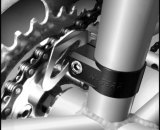
Chinn thinks that the N-gear Jump Stop is a cheap way of making sure your chain stays in place on race day.
Racers that run a 1 by 9 or 1 by 10 need something better to keep the chain on the ring in front. The N-Gear Jumpstop is a great little device that will keep the chain on the inside. A BBG bashguard will keep the chain from jumping off the outside. For those that want a single item solution, the Pauls Chainkeeper does the job well and looks good too!
Traction is the best upgrade to any cyclocross bike, but new tubulars, or even new clincher tires can run more than $100 a set. Getting the right pressure does not have to cost a lot though. Buy a top quality pump with a good gauge, or a pump and a separate high quality gauge that fits Presta valves. Add a notebook to that to keep track of correct pressures and you’re set to find the right pressure for the course you’ll be racing and the right tools to achieve it.
[Ed. Note: another way to ensure dialed-in pressure is with the Craftsman Inflator, which was reviewed last week.]
David Sommerville of Ifixbyx
- K-Edge chain catcher ($40): Pretty much a mandatory item for Cyclocross. They make several models depending on if you have braze on, clamp or single speed setups. All work fantastic and come in several color options.
- Problem Solvers Cable Hangers ($28 pair)
- Fizik Gel bar tale set ($40): Under bar gel paired with Soft touch black tape. Plenty Strong enough for Cyclocross, works well in wet, dry, muddy, gloves and no gloves.
- Speen Umlenker ($30): Make your front derailleur top pull and eliminate the cable pulley. Several models tailor made for whatever from system is on your bike. Currently only available direct from Europe. Super trick setup!
- Aqua Seal, Seam Grip, Seam Seal ($5 tube): These inexpensive treatments for your tubulars that will keep them looking great for the whole season.
- Stan’s No Tubes Cyclocross kit ($70): Being a recent convert to road tubeless and will be trying for cross season give it a shot. It’s proven for MTB racing, virtually eliminate pinch flats while providing good handling. The kit includes tape, valve stem and sealant for conversion. Use your favorite Clincher Cyclocross tires.
- Wide Tires: If not doing UCI events, run wider tires! Being on one of the top Cyclocross teams and working with our European riders in 2010 I learned that wider is faster. You get better traction, handling and suspension. However, the UCI passed a rule for smaller widths for Elite events, maybe to make it harder or slow the riders down …
Deireck Ritter of Collin’s Cycle in Eugene, OR
The first thing I do to a new cyclocross bike is use double-ended housing ferrules to replace the secondary brake levers (if you have them). That way when you need to replace you cable and housing you can change it out quick without re-wrapping your bars. you can use them on shift housing a well, I run 5mm shift housing for this reason. This also lets you remove those secondary levers without running new housing or unwrapping the bars.
I think a chain watcher is a good idea as well, especially if you use a single ring up front. You can make one out of an plastic reflector bracket (if your bike has a traditional size and shaped seat tube). Dropping a chain in a race is not cool!
Chris Mayhew of JBV Coaching
For cheap upgrades, I would say start with tires. That’s really the biggest bang-for-your-buck performance upgrade you can make on a cyclocross bike and arguably the most important one as well. You can win on Shimano 105 but having the wrong tires makes it really hard to win. [Ed. Note: looking for tires? Check out our Tour de Tires for 21 tire reviews.]
Pedals might be an equal upgrade. I realize there’s a lot of debate about what’s best. And the other “non-best” pedals have really improved. My personal recommendation is Time pedals for their mud clearance and ease of use. It’s a contact point you’re constantly in touch with and they need to work every time, multiple times per lap. I realize brand new carbon ATACS are over $100 but I’ve been stock-piling Time pedals from the late 1990’s for about $20 a pop thanks to e-bay.
Brake pads are an easy upgrade as well. It is almost impossible to beat Kool Stop Salmon pads. They last forever, stop very well and don’t retain grit like most other pads. That’s a $10 upgrade that’s almost a game changer. I’ve found the green Swiss Stops to work about as well but they wear much faster. The Kool Stops are compatible with a lot of carbon rims too if you’re cool like that.
Bar tape is an easy and cheap upgrade. It’s hard to find something that is a bit padded and holds up well in the mud but there are tapes that will do that. And the handlebars are a contact point you’re constantly in touch with either when steering or when shouldering.
In general, I’m not a big fan of having one fancy bike with Red and carbon wheels Dugasts. As my boss John Verheul says, two crappy bikes are faster than one nice bike. Get a bike that’s good enough (nice tires and pedals) and put that extra money towards entry fees or a second identical bike.













